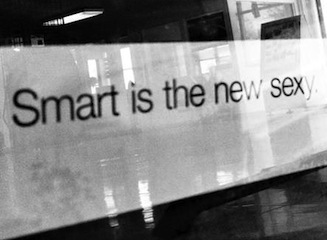 Those of you who have been following this blog for a while will know that I’m a passionate supporter of the shopper marketing cause, so you can imagine my discomfort when I read a recent article in Adweek which, in its opening line, suggested that shopper marketing wasn’t “sexy”. I will confess it riled me a little and then it got me thinking. Is it that shopper marketing simply isn’t sexy, or is it more that shopper marketing has a bit of an image problem?
Those of you who have been following this blog for a while will know that I’m a passionate supporter of the shopper marketing cause, so you can imagine my discomfort when I read a recent article in Adweek which, in its opening line, suggested that shopper marketing wasn’t “sexy”. I will confess it riled me a little and then it got me thinking. Is it that shopper marketing simply isn’t sexy, or is it more that shopper marketing has a bit of an image problem?
Can shopper marketing be sexy?
On one level it depends on what you mean by sexy, and it depends on what your benchmark is. True, there are many parts of the shopper marketing world that are far from sexy: crunching data, lots of cardboard in stores; but couldn’t that be said of most marketing jobs? Advertising shoots in the Caribbean are sexy; eighteen hour shifts in a digital studio signing off the final copy is, in my humble opinion, far from sexy.
And how about the work that Tesco have done in Korea? Creating a virtual online store in subway stations (and a cool video to promote it) – that’s pretty sexy. And Old Spice, with their fabulous “Smell Like a Man” campaign: that’s TV and YouTube viral marketing all rolled into one, and most certainly targeted at the shopper. What’s not sexy about that? It seems to me that, as in any marketing world, shopper marketing has its share of drudgery and drear, but also has its share of pizazz and glamour too.
Shopper Marketing has an image problem
So if shopper marketing is as sexy as any other type of marketing, then perhaps it has an image problem. Perhaps shopper marketing needs a makeover. And to be honest, if you were the brand manager for shopper marketing, you’d probably be polishing your resume now, as you are about to be fired.
Whilst shopper marketing has done a fabulous job on driving awareness, brand comprehension is still poor. Many practitioners still muddle up the consumer and the shopper (link to “when the shopper is not the consumer blog) Using the Adweek article as an example (and sadly an all too typical one) it is clear to see that there is little understanding of what shopper marketing is. The author is suffering from a very common misconception – that shopper marketing and retail marketing are the same thing. They are not, and perhaps it is this which leads the author to believe it isn’t sexy (I’ll leave it to someone else to defend retail marketing!). The Old Spice example above demonstrates clearly that shopper marketing is far more than the rather limited sphere of ‘what happens in stores’. The author gets confused about what shopper marketing is, misquoting Alan Lafley from P&G with his “First Moment of Truth”. For the record Mr. Lafley was talking about the point of purchase, not shopper marketing: in his original quote Mr. Lafley didn’t even refer to shoppers: he talked about the ‘consumer in the store’ – about as far away from shopper marketing as you can get!
Why do I care about this? Why should you care?
In a recent survey conducted in conjunction by engage with Nielsen (to be published shortly, and you can hear about it here first), industry leaders are bemoaning a lack of shopper marketing skills, and shopper marketing talent. I’m convinced that shopper marketing’s image problem contributes to this. How can shopper marketing attract the best of the best: really good people who really know how to market: when people who are writing about it really miss the point?
Shopper marketing is as sexy as any other marketing. Shopper marketing is not just about in-store; not just about the final point of purchase. Shopper marketing is about understanding and meeting the needs of shoppers: it is about developing a marketing mix which changes shopping behavior in a way that drives future consumption of your brand. Shopper marketing is an integral part of the Total Marketing Mix that makes the difference between your brand succeeding or failing in this world.
How sexy is that?!



